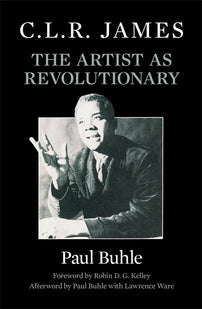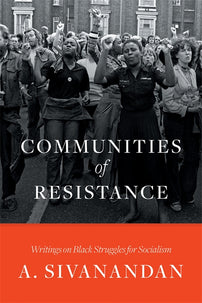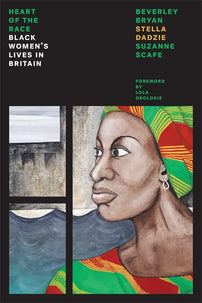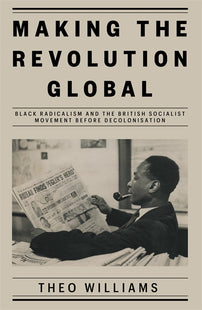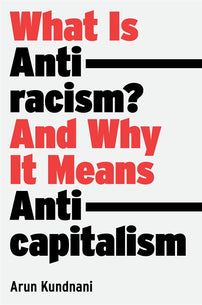English Cricket is racist, sexist and elitist – to change it must learn from the grassroots game
As the recently published Independent Commission for Equity in Cricket report confirmed, cricket in Britain is a deeply elitist, racist and sexist sport, dominated by a white, male establishment linked by the old school tie. Here, Sam Berkson powerfully analyses the history of the sport and says that the only way to save it is to learn from the sports' grassroots.
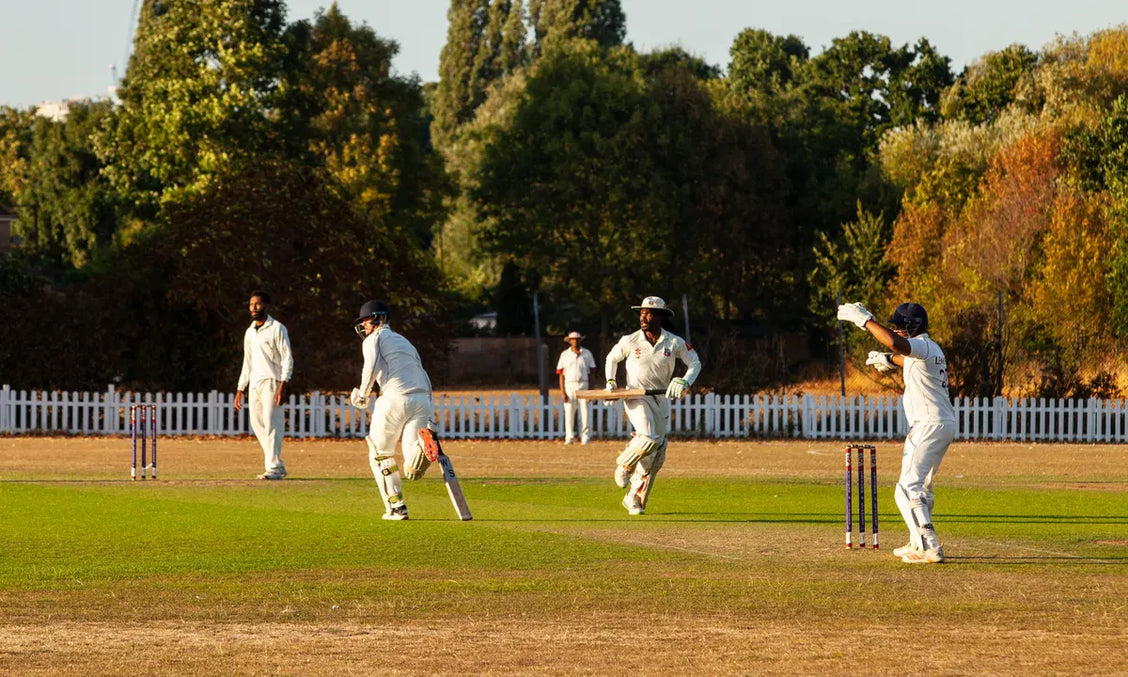
Six weeks after the murder of George Floyd in 2020, the first Test cricket game of the English summer began between England and the West Indies in a pandemic-emptied stadium. As the cricketers gathered on the field, the Caribbean cricketers took the knee and raised a black-gloved fist, broadcast live on British TV. Later, during a rain break, Jamaican commentator, Michael Holding, one of the greatest fast bowlers ever to play the game, gave a history of racism to the Sky TV audience, linking the historical “dehumanisation of the black race” to contemporary incidents and commenting on the White supremacist “brainwashing” of religion, history and education. It was in such an atmosphere that Azeem Rafiq opened up about the racism that had caused him to retire early as a professional cricketer at Yorkshire County Cricket Club. In response, even the pale, stale and male members of the England and Wales Cricket Board (ECB) commissioned a report into racism in the game.
In June this year, that report was finally released as the Independent Commission for Equity in Cricket (ICEC) report. The Movement for Black Lives has been truly revolutionary.
The report is refreshingly uncompromising and radical in its recommendations, even going so far as to criticise its own commissioners. “The ECB often fails to name structural and/or institutional forms of racism, sexism or class-based discrimination as problems in the sport,” the authors write, “despite the overwhelming evidence that they exist”. The ECB, they say, when dealing with discrimination tend to focus only on “deliberate interpersonal abuse”.
Yet, three years since that commission was formed, humble pie is off the establishment menu and the power of words like “institutional” and “structural” diminished by the sneering of reactionaries. Meanwhile a Conservative “war on woke” has been silently declared. The terms “woke” and “wokeness”, now so prevalent a part of the British political lexicon, are, as Huw C Davies and Sheena E MacRae explain, treated as “empirically established concepts” rather than the “discursive constructs” that they are – constructs which conveniently provide “sufficient interpretive flexibility to allow anti-woke campaigners to apply them to any group or practice they wish to discredit.”[1] Commendably, the report swats these attacks aside. “Some people may roll their eyes at the perceived ‘wokeness’ of this work”, the authors write. “However, … we consider – and it is often defined as such – that being ‘woke’ or doing ‘woke work’ simply means being alive to injustice.”
***
They are not the first people to point out the problems in cricket. Nor was Rafiq the first English professional to speak up. Seven years before Rafiq told of feeling “isolated” in a team that found it “funny” that they had “a captain who was openly racist”, his former teammate Adil Rashid voiced his own feelings about not being picked by (probably) the same Yorkshire captain, Andrew Gale: “I didn't get answers as to why I wasn't playing. It was: ‘You're not playing today. We don't feel you're bowling well enough.’ But how can I not be bowling well enough when I'm hardly bowling at all?”[2]
A year after Rashid asked that question, Gale was banned for two games for telling mixed-race South African batter, Ashwell Prince, to “fuck off back to your own country, you Kolpak fucker”[3]. After his retirement as a player, Gale went on to become the Yorkshire head coach, a stint that ended in 2021 with another suspension. It wasn’t Rafiq’s allegations that brought him down, but the discovery of a tweet from 2010 in which (as a Huddersfield Town fan, engaging in “banter”) Gale told Leeds United head of media, via Twitter, to “button it, yid!”.
With the Yorkshire racism controversy reaching parts of society that usually pay little attention to cricket, the club needed to act. This historic tweet was the official reason to sack Gale. He later won a case for unfair dismissal.[4] Without any sense of irony, he made a long public statement defending himself, accusing the man who had been driven to the brink of suicide by the racism at the club, of leading a “witch hunt”. According to Gale, Rafiq had made “sweeping generalisations”; his allegations were “unfair and unjust”. In fact it was Gale who was the victim. He could no longer get a job in cricket and “the timing and manner in which my dismissal took place caused immense upset for my young family just before Christmas.”[5] To top it all off, he crowed over revelations of Rafiq’s own historic antisemitic “banter”.[6]
[book-strip index="1"]
But it was not just at Yorkshire that Black and Asian cricketers were facing barriers to their success. Adil Rashid became one of the world’s most highly valued leg-spinners, particularly in the lucrative and globalised T20 game, but he faced similar selection problems for the England Test Team, in whose dressing room, we learned, all Black and Asian players were nicknamed “Kevin”. So, too, was Alex Hales’s black dog.[7] Rashid had the dubious distinction of going on tour with the national side four times between 2008 and 2015 without playing a single Test match. Once he finally broke into the side, he was dropped again. Despite being England’s top wicket-taker in an otherwise disastrous Test series in India in 2016-17, Rashid was not chosen to tour Australia later that year. England coach, Trevor Bayliss explained the omission: “in Test cricket, you have to try to keep a lid on it at times and not give one or two bad balls an over. Rashid has struggled with that a bit.” England lost the series 4-0, choosing instead another leg-spinner, Mason Crane: a 20-year-old with only two seasons in professional cricket and whose career economy rate was worse than Rashid’s. Once there, Crane played just one test, took one wicket and conceded 193 runs at an average of 4.02 runs per over. It was the third most runs conceded by an English bowler in an innings in the history of Test cricket. England fans were left asking why Mason Crane, educated at £23,000 a year Lancing College, got the nod over the Bradford-born, state-educated Adil Rashid.
One reason given by the England selectors was that they were impressed “with Crane’s character” and found Rashid “diffident”. Despite describing the latter as an “attacking bowler”, they were not sure he “could get into the battle” [8]. This extremely subjective measure seems to mean that a player without the right “character” has to change to adapt to the team’s culture, rather than the team changing to embrace a talented “outsider”. In the light of these kind of cricketing decisions, the fact that the ICEC report makes explicit the connection between class and race in cricket’s exclusionary practices makes it all the more worth reading.
***
The ICEC recommend a radical break between professional cricket and private schools. The problem is severe. The report gives the shocking fact that “the percentage of male England players privately educated was 57% in 2012 and 58% in 2017” – although less shocking given that “private schools represent 70.9% of the secondary schools that are connected with the Counties.”
“Gentlemen and Players” is a very old distinction in cricket, but the balance has not always been this bad. Current trends reflect a general neoliberal increase in the wealth and class divide. At least 6 players at Surrey, 3 of whom have played for England, were educated at a single school, Whitgift School in South Croydon. As part of a yearly fee of £24,000 for day pupils or £47,000 for boarders, students’ cricketing development is overseen by David Ward, former Croydon carpenter and Surrey cricketer from 1985 to 2000. Thus, individuals who benefitted during the social democratic era, like Ward, are, in the post-Thatcherite plutocratic one, hired by elite institutions to train the privileged in the sports they themselves had learned at secondary moderns and local clubs. These ex-pros can then recommend talented students to their former employers.
Of the 18 batters and wicket-keepers capped by England in the first decade of the 21st century, only 7 were educated at an English state school. Of these, only 2 (Marcus Trescothick and Paul Collingwood) got an extended run in the Test team. The first batter to be capped in 2010, however, was the state-educated Michael Carberry. Carberry also started his career at Surrey and was educated in Croydon, but his route was somewhat different. As he told me when I interviewed him in 2019, he learnt his cricket by “imitation” thanks to his parents’ video library of recorded cricket games, and from going to watch his dad play at his local club. “I found I had a deep love for the game, I was always intrigued by it,” he told me. Then, “by chance”, a brochure advertising a summer holiday cricket camp in nearby Thornton Heath came through his door. “It was run by a scout from Surrey called Brian Ruby. At the end of the week, he spoke to my mum and said he’d like to invite me for trials and further coaching at Surrey under 11s.” Carberry’s parents love of cricket was inculcated in their native Guyana and Barbados, and in 2010 he became also the first player of Caribbean heritage to be capped for England in the 7 years since Mark Butcher played his last test in 2003.
Carberry’s story points to how England could increase “diversity” in their professional cricket structures, while the reliance on the initiative of individuals like Ruby shows why his story is so rare. Shortly before I interviewed Carberry, I also spoke to Gulfraz Riaz, founder of the National Asian Cricket Council. He too spoke about how cricket’s private school ties (in both senses of the word) were holding back racially minoritised cricketers. At Middlesex, he told me, Asian cricketers make up “70% of their age group cricket”. And yet, “in the last 20 odd years, they’ve only produced two first team [Asian] players, who have played in a sustained period … Owais Shah and Aftab Habib.” For Riaz, this doesn’t make sense, even from a commercial point of view. “Someone at Middlesex is very comfortable in wasting tens of thousands of pounds on a system ... Yes the Asian cricketers are here, but we are still looking [to private schools] to get the players.”
Like most sports today, cricketers who make it to the professional ranks need to be picked up by the First Class Counties aged 11 or 12, often earlier. The ICEC recommend that “inter-county cricket should begin at U14 level”. Before that, the FCC should locally fund clubs and competitions, allowing “as many young players with potential as possible to play a high-standard of cricket without the costs of travel”, mitigating “the very significant structural advantages that young children who attend private schools have over their state school counterparts”. Creating partnerships with state schools and local clubs, these would in turn feed into national competitions in the later teenage years, whose finals they think should replace the annual Eton vs Harrow game at Lords, thus opening up the “home of cricket” to a much wider audience. They even suggest “bio-banding”, grouping children on physical maturity rather than age at U10-U13 level.
It seems highly unlikely that anyone would take them seriously, but the ambition is to be admired all the same. In all professional sports athletes are now hot-housed from early childhood. They are fitter than ever before, yet too many of them seem to play these games like actors mechanically reciting lines learned by rote and performed without flair.
[book-strip index="2"]
It is a refreshingly radical report. It identifies structural racism within the cricket establishment, and it recommends structural remedies. It asks for “an unqualified public apology”, in particular for the ECB’s failure “in relation to women’s and girls’ cricket and its failure to adequately support Black cricket in England and Wales”. Building on that apology, it recommends a “targeted action plan to reverse the decline of cricket in Black communities, giving financial support and capacity building to Black-led cricket clubs”. On gender inequality, they suggest an “overhaul of women players’ pay structure and funding for women’s games, aiming for equal pay.” In terms of governance, they criticise the ECB’s “dual roles of promoter and regulator” and call for an “independent regulatory body”. These recommendations, alongside others, such as their State School Action Plan, financially incentivised targets to meet diversity quotas, EDI training for leadership and diversity of scouts, selectors and coaches would all go a long way to improve the game of cricket and indeed further the cause of feminism, anti-racism and social integration in Britain in general.
Nevertheless, it is strange that the report’s foreword was given to John Major. Predictably, the former Prime Minister and current President of Surrey County Cricket Club cites his Brixton upbringing to show his commitment to the cause. Yet his loyalty to the “young migrants” of West Indian origin with whom he played his childhood games of “street or park cricket” did not extend to investigating, let along bringing to justice, the Metropolitan police when their corruption and collusion with racists and criminals allowed Stephen Lawrence’s killers to get away with murder on his watch. Nor did his state school education help him reverse the sell-off of school playing fields.
Perhaps the authors of the report hoped that by gaining the signature of an establishment figure they had more chance of changing the establishment. However, as the report indicates (if not quite fully names), the problem lies in the nature of who runs the game. The cricketing establishment is racist and patriarchal because the British establishment is racist and patriarchal. In fact, racism and patriarchy are essential functionings of capitalism. This is the reason they have not gone away, however modern and aware we think we are
***
As CLR James pointed out in Beyond a Boundary, cricket is a subject of historical movement as much as anything else, expressing the values of the age in which it is played. In 1932-33, towards the end of Empire and in order to defeat the “invincible” Australians, England resorted to the notorious “bodyline” tactics. This was the sporting violence of a team unable to countenance its loss of power and prestige, mirroring and foreshadowing the real violence of the British empire in its last days in India, Kenya or Malaysia. The England captain was Bombay-born, Winchester and Oxford educated, Douglas Jardine. Decades before the advent of helmets, chest or arm guards, Jardine commanded Harold Larwood, son of a Nottinghamshire coal miner, to bowl as fast as he could at the head and body of the Australian batters. In that same era, in the British West Indies, it was White batter-captains and Black labouring-class bowlers. As the alarming stat about state-educated batters shows, this is no historical relic. England captains of recent times – Andrew Strauss (Radley College), Alastair Cook (Bedford College), Joe Root (Worksop College) – were also privately educated. The few state-educated players have generally been bowlers (Jimmy Anderson, Chris Woakes, Mark Wood, Adil Rashid). It is the officer-class brain directing working-class brawn.
Nevertheless, there are differences between eras. As A. Sivanandan observed, “racism does not stand still; it changes shape with the economy, the social structure, the system and, above all, the resistances to that system.” The racism of today is not on paper biological or civilisational. It is directed against those who, in the words of Tony Blair, threaten “our way of life”, punishing those who will not join the “common endeavour” of the nation, who do not acknowledge the “duties we owe”, and who do not share our “values”.[9] In the years since Blair’s speech, the figure of the Muslim terrorist, the welfare “cheat”, the “bogus” asylum seeker, the Black gang member and what he called the “Anti-American” left have been “linked by a common thread of principle”, one that theorists of the Sivanandan school have defined as xeno-racism. It is “passed off as xenophobia, a ‘natural’ fear of strangers. But in the way it denigrates and reifies people before segregating and/or expelling them, it is a xenophobia that bears all the marks of the old racism.”[10] The way in which Black and Asian players are stereotyped within English cricket is a part of this exclusionary mechanism.
***
In the Indian subcontinent, cricket overtook hockey, football and volleyball in popularity in the late 1970s and rose with the advent of the Indian Premier League (IPL) to become one of the most watched and commercially profitable sports in the world. Correspondingly, British South Asians have taken up the sport in great numbers. The IECE report quotes ECB figures that between 2017 and 2020, 26-29% of adult recreational cricketers in Britain were of South Asian heritage. Yet, “the number of Asian British and Black British male professional players for FCCs reduced from 9.2% in 2012, to 8.1% in 2021.” The comment allegedly said to Rafiq at Yorkshire – “there’s too many of you lot, we need to do something about it” – could serve as a shorthand for the attitude of the cricketing establishment and the political tenor of the country in general. Asian people are not like us, they do not share “our values”, and, like Adil Rashid, they don’t have the right “character” to be allowed into the holy of holies, the England Test Cricket team.
Exceptions prove the rule. Moeen Ali came into the England team as a batter who bowled a bit of spin. England decided however that he needed to become an off-spinner, and a successful spinner he became, working hard on that unfamiliar part of his game with his Worcestershire teammate, Pakistan spin legend Saeed Ajmal.[11] Over his career, unusually, he has batted every position between 1 and 9 for England. He is not alone in being converted in this manner. England did the same to Samit Patel and Zafar Ansari (one of the authors of the report). It has been a theme that Asian British players play for England as spinners on tour of the Indian subcontinent, but not as batters, not as fast bowlers and not very often in home Test matches. Could it be that England are more comfortable with the idea of a British Muslim as a spinner (a purveyor of foreign, tricky craft) rather than a batter (the noble art of the intellectual)?
Of the 20 Black male cricketers who have played for England, the majority have been fast bowlers. Again, it seems to some extent that stereotyping has played a role here. Most recently, Barbados-born Jofra Archer’s career was ruined by expectations that he should be the brute muscle to win games for England. Bowlers like Archer who can consistently bowl over the magic 90mph barrier need be used sparingly and bowl in short bursts owing to the strain it places on the body. Yet, in 2019, Archer bowled more than any other England bowler, including an incredible 42 overs in one innings in New Zealand (double a normal day’s work for a bowler). As the initial hype around this very talented cricketer died down, grumbles began that he was not bowling quick enough. Archer responded by saying, “you can't run in the whole day bowling 90mph. It's actually impossible.”[12] Predictably, the stereotypes of indefatigable black bodies turned to accusations of the lazy Black man. Archer has now been injured for 2 years and is unlikely to play Test cricket again. England have exploited his special talent to the point of breaking him. Holding’s history of “the dehumanisation of the Black race” continues to be relevant.
***
The first Test match I remember watching was the West Indies tour of England in 1991. Over the course of that series, England included 5 players of Caribbean heritage: Philip DeFreitas, David Lawrence, Chris Lewis, Devon Malcolm and Mark Ramprakash. Four of them played together in the final test, which England won to draw the series 2-2. Excited by England’s relative success against the mighty West Indies, I taught myself to bowl by imitating the fastest of the England bowlers, David Lawrence. As a White boy growing up I emulated him because he was exciting, bowled fast and won the game for “my” team. How much more might it have meant to young Black British children watching him?
Yet, none of the Black cricketers of the 90s were able to hold down a regular place in the England Test side. Instead of inspiring a whole new generation, as UCL history professor Michael Collins relates, “since 1997, the number of black professional cricketers in England has dwindled by 75 per cent”[13]. A common narrative is that Black kids became more interested in football or basketball (cultural reasons), or that Black cricketers did not try hard enough (biological). Writing in the Wisden magazine in 1995, Robert Henderson proposed the latter theory. It was, he wrote, “difficult to believe that a foreign-born [sic] has any sense of wanting to play above himself simply because he is playing for England”. After all, he asked, “all the England players whom I would describe as foreigners may well be trying at a conscious level, but is that desire to succeed instinctive, a matter of Biology?”[14] No wonder, therefore, as Chris Lewis explained years later, that “when Devon [Malcolm] and I played for England, we always had dinner together before the match and wished each other well for the next day. Why? Because we felt – for right or wrong – that if things went badly one of us would get it in the neck.”[15]
Black British cricket followed a pattern that can be seen in post-war Britain in housing, education, political movements and cultural scenes. Denied access to existing facilities, Black people established their own infrastructure. But once they reached a level of successful self-organisation, they then had it taken from them. As Colin Prescod narrates at the start of David Koff’s 1978 documentary Blacks Britannica, “if one weren’t wary about talking about conspiracy, one would say that there was clearly a conspiracy against Blacks in this country.” In cricket, as elsewhere, Black success tends to be written out of history, while mainstream culture ascribes Black “failures” to biological or cultural reasons.
The ICEC mentions the turn to football but notes that, “for many stakeholders the bigger issue is the extent of anti-Black racism in English cricket, particularly during the 1990s”. Despite pointing out that between the 1950s and 70s, Caribbean cricket “clubs and leagues usually existed outside the cricketing ‘mainstream’ so were not under the control of the governing body”, they do not quite draw the logical conclusions from the “issues” that their “many stakeholders” have told them about.
The report briefly cites Michael Collins’s research into the tragic story of a single institution, Haringey Cricket College (HCC), which the report describes as “a landmark achievement of the Black cricket community.” They could have focussed more on it. As Collins writes,
By the mid-1990s there were thirty-three active professional cricketers who had either come to England from the Caribbean as children, or who had been born in England to parents of Caribbean origin. Half of that total—fifteen first class players—had been trained at Haringey, and other black England internationals such as Philip DeFreitas and Chris Lewis, though not formally registered, trained at the college and benefited from the support network it provided.
HCC had managed to secure funding from Littlewoods Pools, once the largest private company in Europe[16]. With Littlewoods’ decline, in 1997 the college lost its £50,000 annual grant and they needed £25,000 to keep afloat for a year before they could source a replacement grant. The newly formed ECB, under chair Lord MacLaurin, former chief executive of Tesco, declined to help. Whatever the ECB wanted to do with their £2 million charity budget, it did not include saving Black cricket’s most crucial piece of infrastructure. Collins concludes that “even the most generous reading of the situation suggests the ECB's indifference towards the achievements of the Haringey project, and by implication, the present and future value of black cricket in England.” The ICEC’s conclusion is that, “it also sent a signal that the cricket establishment did not see Black cricket as important.” Perhaps this is just a legalistic caution on behalf of the authors but it seems strange to focus on messaging. The significance of the “ECB’s indifference” is less a matter of what signal it sent, but more the dismantling of the physical means for nurturing and promoting Black talent. I suspect none of the “stakeholders” were unaware of the attitude of the cricket establishment. It matched their experience in society more generally. The participation of inner-city Black children dwindled, not because they were given bad “signals”, but mostly because there were no longer any routes into the game.
[book-strip index="3"]
Similarly, to cite the decline of West Indies international cricket as the reason for a lack of interest from British Caribbean young people is to put the cart before the horse. The West Indies have been structurally adjusted into a minor nation, their best players leaving the islands or playing franchise cricket at the expense of the national team. Lord MacLaurin and the other lordly businessmen who have run the English game can reminisce fondly on the great West Indian team (unbeaten in a Test series for 15 years), safe in the assurance that Black cricketers have not stormed the citadel. International Test cricket becomes a game between India, Australia and England. Domestic English cricket becomes a game for the elite. It is, as Hit Racism for Six wrote, “the triumph of prejudice and complacency over cricketing acumen.”
***
The ICEC report came out on the opening day of the 2023 Lords test versus Australia. In response, England captain Ben Stokes issued a statement, speaking with what seemed like genuine humility, as “a state-educated pupil who dropped out of school at 16 with one GCSE in PE.”
Stokes’s appointment came after another humiliation against Australia. Without really changing the playing personnel, England have started winning again and in some style. They play a brand of cricket under new coach Brendon “Baz” McCullum, dubbed “Bazball” by ESPN Cricinfo writer, Andrew Miller. It does away with data-driven, technocratic cricket and allows players to express themselves. Their mantra is “to entertain”, but to borrow from poet Christopher Logue, it is entertaining without being entertainment. After decades of “keeping a lid on it” or “bowling dry” as they called it, designed to bore a batting team out, it is refreshing to see an England under McCullum and Stokes want to attack, both with bat and ball. In doing so they are breaking 100 years old records for the speed of their run-scoring. Perhaps the reason the records take us back this far is because that is how cricket was once played, and only now are England finding that method again. Bazball is allowing players to be themselves rather than to conform to what the experts deem the best way to play. It is no coincidence that it was this team that brought Moeen Ali out of retirement and returned him to number 3 in the batting order. It is a step in the right direction that an Asian cricketer is not only selected, but allowed to play in the position that his talent merits.
The recreational game, as the report points out, is a diverse place. To close the diversity gap between the grassroots and the top, English cricket needs to fund cricketing facilities in the places where people are actually playing. In return, those players will become interested in English cricket.
Patriotism is regressive. It suits the agenda of the ruling class. Love for the abstract idea of “your country” serves only to help those who run the country to win the support of those who don’t. People, however, can have a progressive love for their local area. We see such regional pride act as a drive not to exclude but to make one’s area a better, more welcoming place. The ICEC recommendations that connect the local with the professional are exactly what is required to wrench the game back into the hands of the people who play it, and in the process improve the quality and diversity – as well as the entertainment value – of the cricket that is played. As CLR James said, cricket, despite its stuffy reputation, “is a game that all people in England at one time were interested in”. Watching players perform as representatives of the place where you live is the actual and commercial basis of all professional sports teams. If some of those players look or speak like you, lived in your neighbourhood or went to your school, the attachment is likely to be deeper.
That general interest in the game has been lost. I will end with an unlikely conspiracy theory, which I found in an unlikely source. In a book jointly written by Middlesex and England legends Bill Edrich and Dennis Compton, Edrich describes how during the “golden summer” of 1947, crowds for county games were so large that the Home Secretary brought in the head of the MCC to discuss how, “the pull of cricket might be interfering with industrial production”. Demobilisation was underway, people were leaving the army and returning to civilian life and, after the horrors of war, they discovered what really mattered – including games. As people skived work to watch cricket, county cricketers were encouraged to play more exciting and adventurous cricket to please the increasing numbers of people who came to watch. A number of long-standing records were broken that year.
Could it be that cricket – 4 or 5 days long, beautifully pointless and expressive of entirely unproductive things like beauty, skill, individual expression, collective endeavour – is dangerously anti-capitalist? It does not fit into work schedules. It encourages reflection and analysis rather than cheap thrills and adrenaline. Could it be that at some level the British establishment would rather keep that game to itself, rather than let the plebs get involved? In Ford Maddox Ford’s Some Do Not, the aristocratic protagonist, Christoper Tietjens, thinks that among the advantages of being an English gentleman is “to have deep arm-chairs in which to sit for hours in clubs, thinking of nothing at all – or of the off-theory in bowling”. The rest of us can run ourselves down in “a noisy, troublesome and thoughtless society” without time for such luxuries as watching cricket or reading overly long articles on the subject. Could it be that that ban on cricket being too popular still holds?
[1] https://journals.sagepub.com/doi/10.1177/03063968231164905
[2] https://www.independent.co.uk/sport/cricket/leg-spinner-adil-rashid-yorkshire-are-ruining-me-8565082.html
[3] The Kolpak Ruling, was a 2003 ruling of the European Court of Justice. In the UK, pre-Brexit, it allowed EU-nationality players and players from countries which have Association Agreements with the EU, to feature in English cricket without being considered as one of the limited quota of ‘overseas’ internationals. Prince qualified on the basis of his retirement from South African international cricket. https://www.theguardian.com/sport/2014/sep/17/yorkshire-andrew-gale-ecb-hearing-lancashire
[4] https://www.bbc.co.uk/sport/cricket/61729326
[5] https://www.yorkshirepost.co.uk/sport/cricket/andrew-gale-breaks-silence-on-azeem-rafiq-affair-and-yorkshire-ccc-dismissal-3749713
[6] https://www.theguardian.com/sport/2021/nov/18/azeem-rafiq-apologises-antisemitic-messages-2011-cricket
[7] https://www.espncricinfo.com/story/alex-hales-denies-any-racial-connotations-in-naming-his-dog-kevin-1289854
[8] https://www.espncricinfo.com/story/trevor-bayliss-impressed-by-feisty-mason-crane-1125584
[9] https://www.theguardian.com/politics/2001/oct/02/labourconference.labour6
[10] https://irr.org.uk/article/the-emergence-of-xeno-racism/
[11] https://www.cricket365.com/latest-news/moeen-to-benefit-from-ajmal-input/
[12] https://www.skysports.com/cricket/news/12123/12071838/jofra-archer-i-dont-care-how-fast-i-bowl-for-england
[13] https://onlinelibrary.wiley.com/doi/10.1111/1467-923X.13228
[14] See Pitch of Life: Writings on Cricket: Chris Searle; Parrs Wood, 2001.
[15] https://www.thetimes.co.uk/article/mike-atherton-meets-chris-lewis-that-first-night-in-jail-i-had-a-plan-to-tie-my-sheets-together-9pswscch2
[16] http://news.bbc.co.uk/local/liverpool/hi/people_and_places/history/newsid_8572000/8572584.stm
